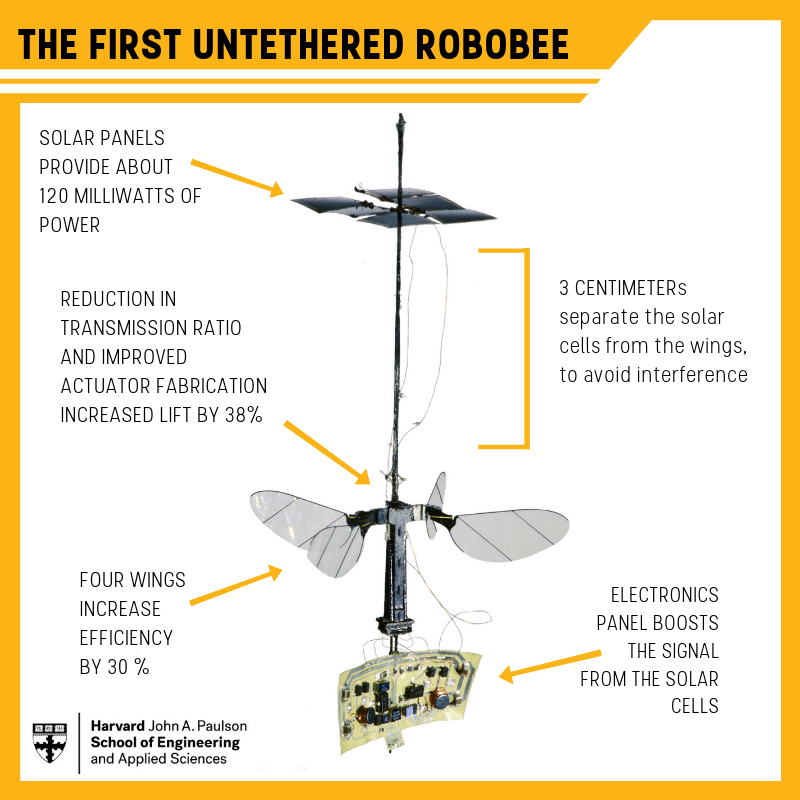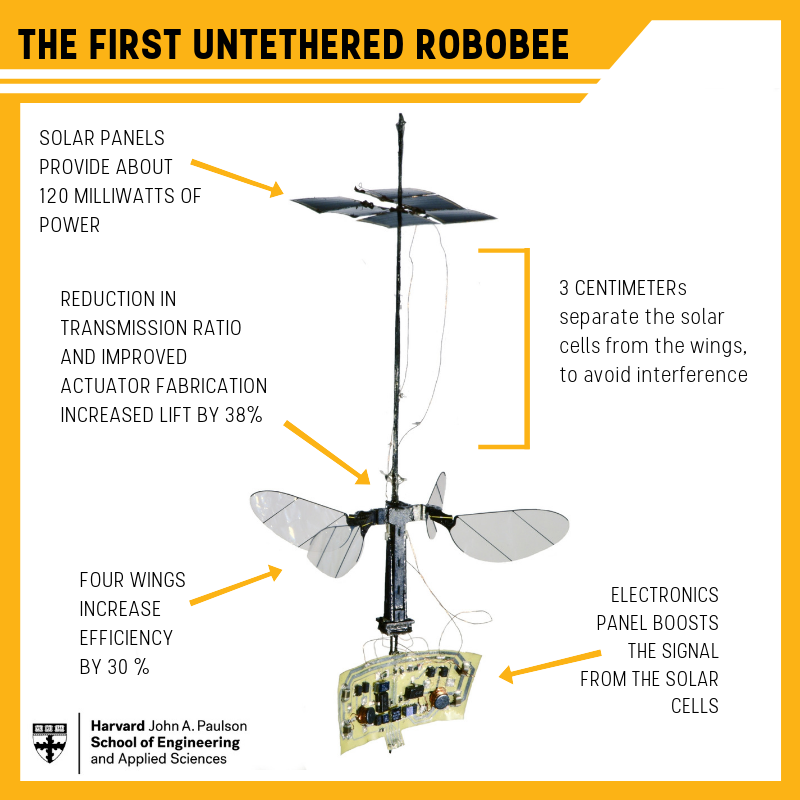
We’ve seen Harvard’s Robobee flying robot evolve for years: After first learning to fly, it learned to swim in 2015, then to jump out of the water again in 2017 — and now it has another trick up its non-existent sleeve. The Robobee X-Wing can fly using only the power it collects from light hitting its solar cells, making it possible to stay in the air indefinitely.
Achieving flight at this scale is extremely hard. You might think that being small, it would be easy to take off and maintain flight, like an insect does. But self-powered flight actually gets much harder the smaller, which puts insects among the most bafflingly marvelous feats of engineering we have encountered in nature.
Oh, it’s easy enough to fly when you have a wire feeding you electricity to power a pair of tiny wings — and that’s how the Robobee and others flied before. It’s only very recently that researchers have accomplished meaningful flight using on-board power or, in one case, a laser zapping an attached solar panel.
<iframe title="“Watch a laser-powered RoboFly flap its tiny wings” — TechCrunch" sandbox="allow-scripts" security="restricted" src="https://techcrunch.com/2018/05/15/watch-a-laser-powered-robofly-flap-its-tiny-wings/embed/#?secret=8Za7qK9067" data-secret="8Za7qK9067" …read more
Source:: TechCrunch Gadgets

 Previous post
Previous post
 Next post
Next post